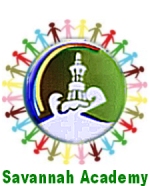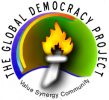The land area and peoples of what is now called Guinea Bissau was part of the vast Mali empire that stretches from Mali to the Atlantic coast. The distance between the semi-autonomous domains of the Mali empire and the seat of empire made the former prime targets for colonial expeditions from Europe particularly early Spanish, Greco-Roman, and Portuguese explorers. Bolama was the first gateway into Africa for the Portuguese who established a fort there to conduct trade in gold, produce, and slaves. The colonial ambitions of these early Portuguese seafarers was stifled by local leaders who relegated the Portuguese to coastal communities at first but reinforcements from Portugal gradually overwhelmed the capacity of local leaders to contain the colonists. The colonists had infiltrated as far north as Cacheu and Cassamance in Southern Senegal. Portugal also concluded agreements with precursor French and British colonists to carve out the Portuguese Guinea colony with its capital at Bolama in 1879. The capital was later moved to Bissau in 1941 for the latter’s deep harbor making it ideal for a main port. The colonists have been successful in containing local anxieties and disdain for colonial invasion and the commerce in gold, produce, and slaves has made Portugal prosperous despite its size. In 1952, Portuguese Guinea became a province of Portugal.
of the vast Mali empire that stretches from Mali to the Atlantic coast. The distance between the semi-autonomous domains of the Mali empire and the seat of empire made the former prime targets for colonial expeditions from Europe particularly early Spanish, Greco-Roman, and Portuguese explorers. Bolama was the first gateway into Africa for the Portuguese who established a fort there to conduct trade in gold, produce, and slaves. The colonial ambitions of these early Portuguese seafarers was stifled by local leaders who relegated the Portuguese to coastal communities at first but reinforcements from Portugal gradually overwhelmed the capacity of local leaders to contain the colonists. The colonists had infiltrated as far north as Cacheu and Cassamance in Southern Senegal. Portugal also concluded agreements with precursor French and British colonists to carve out the Portuguese Guinea colony with its capital at Bolama in 1879. The capital was later moved to Bissau in 1941 for the latter’s deep harbor making it ideal for a main port. The colonists have been successful in containing local anxieties and disdain for colonial invasion and the commerce in gold, produce, and slaves has made Portugal prosperous despite its size. In 1952, Portuguese Guinea became a province of Portugal.

ROP-1 Africa Partners
Although Portuguese Guinea was under Portuguese colonization and La Guinea was under French colonization, the manner of colonial governance was markedly similar in that the colonies were plantations, its people the property of the colonists, and the territories served as springboard for further colonization of hinterland peoples, with tacit support and encouragement from the colonists’ home countries. Colonial lands were traded either by estoppel or in exchange for other colonial territory elsewhere. The people of the region are intricately linked to those of La-Guinea in both ethnicity, traditions, and languages. Therefore when support from their homeland began to be weakened by the events of WWII, a concert of independent movements in the region saw the Portuguese Guinea independence supported by the La-Guinea trades-union independence movement and their leader Ahmed Sekou Toure. In 1956, Amilcar Cabral formed the PAIGC party for the independence of Bissau and Cape Verde and located its headquarters to Conakry in La-Guinea under the tutelage of Sekou Toure. Shortly after La-Guinea won her independence from France and in reaction to the ominous link between trades unions in Bissau and the PAIGC, striking dock workers in Bissau were massacred by the Portuguese colonist authorities in 1959. This precipitated a decade-long guerilla war waged from Conakry by the PAIGC and Cabral with significant success. France and Portugal embarked on clandestine and overt campaigns to destabilize both the young La-Guinea government and the PAIGC revolutionary movement of Cabral.  In 1970, Portuguese colonial mercenaries, aided by French expatriates and collaborators in La-Guinea, launched an unsuccessful invasion into Conakry and in 1973 a similar expedition achieved the assassination of Amilcar Cabral on January 20th, 1973, this time with the help of collaborators Portugal was able to nurture from within the ranks of PAIGC itself. Amilcar Cabral’s death did not impede PAIGC’s advance toward independence however, and on September 24th, 1974 Guinea Bissau declared its independence from Portugal and it was recognized so by the United Nations in November of the same year. Amilcar’s brother Luis Cabral became Bissau’s first President governing with a Military High Command. Many of the PAIGC collaborators who fought with the Portuguese colonists to maintain the status-quo ante were rounded up and slaughtered and buried in mass graves.
In 1970, Portuguese colonial mercenaries, aided by French expatriates and collaborators in La-Guinea, launched an unsuccessful invasion into Conakry and in 1973 a similar expedition achieved the assassination of Amilcar Cabral on January 20th, 1973, this time with the help of collaborators Portugal was able to nurture from within the ranks of PAIGC itself. Amilcar Cabral’s death did not impede PAIGC’s advance toward independence however, and on September 24th, 1974 Guinea Bissau declared its independence from Portugal and it was recognized so by the United Nations in November of the same year. Amilcar’s brother Luis Cabral became Bissau’s first President governing with a Military High Command. Many of the PAIGC collaborators who fought with the Portuguese colonists to maintain the status-quo ante were rounded up and slaughtered and buried in mass graves.
SERIAL COUPS
Borders Senegal (338km) and La-Guinea (386km)
Coast is ridden with a profuse archipelago of islets.
___________________________________________________________________
BISSAU Facts
Population: approx. 1,840,000
Latitude: Between 11 and 12.5degrees.
Longitude: Between 13 and 16.8 degrees
Terrain: Coastal lowlands rising to Savannah plateau in the east.
Highest pt: (300m / 984ft.)
Land Area: 36,125 sq. km (13,948 sq. mi.)
Coastline: 350km (219 miles) – Atlantic
Average Annual Rainfall:
Rainy Season – June to Nov., tropical monsoons. Winds SW.
Dry Season – Dec to May. Harmattan winds. NE
President of Bissau: Currently in Flux
Airport: Seaports:
Official Language: Portuguese
Currency: Fcfa.










